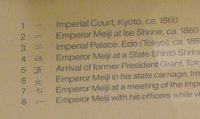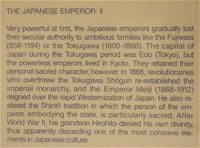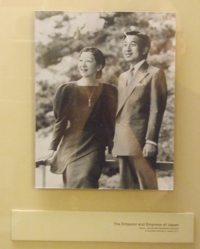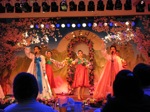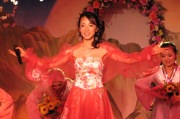My favorite language teacher here at the SNU language program (the same teacher whose stories about student stereotypes and protest culture I talked about in an earlier posting) told us a few interesting things about dog meat in Korea. Again, this posting probably won’t be anything new to those who know Korea well but life here is full of new discoveries for people as ignorant about Korea as I increasingly feel. I am ever reminded that, “A little Learning is a dang’rous Thing.”
I think many people, including those who have never visited Korea or have had the opportunity to study it, know that they eat dogs here. Now, I had my share of dog meat in China—more than my share, actually, as I did not really care for the dish that was served at a Guizhou restaurant near my dormitory in Beijing. However, dog meat isn’t exactly topping the menu in either country and has often been used as a convenient way to dismiss the two countries for their barbarism.
I remember playing pool one night with some friends in New York a few years ago. I was wearing my Qinghua University T-Shirt and a woman spoke to me suddenly and asked me if the writing on the shirt (the name of the university) was in Chinese. I said yes, and she proceeded to tell me why she could never travel to China, “You see, I never travel without my [her dog’s now forgotten name here] and if I took [said dog] to China, I would be too scared that someone would snatch her away and eat her.” I was perhaps just as surprised that she could travel on short vacations anywhere outside the US with her dog—given all the regulations on potentially disease-carrying pets—as I was her at her fear of starving Chinese dog thieves.
I have not eaten any dog meat (개고기) here in Korea yet, or visited the dog meat market here in Seoul. I think the market is only held twice a month, with the 5th day of the month being one of them (hmm…that would be this Saturday…) Again, however, despite the fact that summer is the season for eating dog meat, according to my teacher, it isn’t nearly as common as it used to be. What I say below is entirely based on her own claims and I haven’t confirmed any of this.
My teacher claims that the consumption of dog meat has steadily declined over the years. The “summer delicacy” in Korea has gradually gone from being dog meat dishes such as dog meat soup or Bosintang 보신탕 and chicken to being more than anything, the ubiquitous Samgyetang 삼계탕 soup. She believes that Samgyetang has essentially replaced Bosintang in Korean food culture.
She made two further observations about this shift and the decline of dog meat: 1) There is increasing opposition from pet owners who object not only to the fact that dogs are eaten, but also to the cruelty towards the dogs in the killing process. 2) This reflects, in a way, the economic development of Korea, as the owning of (but perhaps more importantly, the love towards) pets and a general sympathy for animals reflects changing priorities in society.
One aspect of dog meat consumption which adds to the disgust many already might feel comes from the killing process. My instructor explained that before they kill the dogs, they often put them into a special bag and beat the dogs severely or simply beat the dogs slowly to death. Why would they do this? She says that while being beaten the dogs release all sorts of hormones in their excitement, all of which help make the final product more delicious. My teacher added as a side that this was exactly why cats play with their mice for so long before killing them, something I had not heard before.
I asked a fellow foreigner here about this process and he claims to have witnessed the beating process at the dog meat market (they didn’t use a bag, he said, but just beat the dog slowly to death in a pen) and he said it was enough to put him off dog meat forever. He said he contemplated briefly setting up a special dog market for the creation of “well-being” dog meat made from freshly killed dogs that were killed in a more humane way. It would be slightly less tasty but a bit easier on the conscience.
Perhaps the most interesting thing my instructor had to tell us was about the increased demand for the meat in earlier days. When she was a child, in the 1970s, dog meat dishes were not all made from the special breed that is apparently mostly used today. In those somewhat more chaotic days, all sorts of dog meat was apparently marketable. This meant that people could and did occasionally sell their household pets or their litters.
One common feature of living in Japan and Korea is the fact that small vehicles with loudspeakers, recorded tapes, or sometime just a yelling driver will pass by one’s house or apartment advertising items they have for sale (such as vegetables or heating oil) or things they wish to collect and buy (such as old household appliances).
According to my teacher, as late as the 1970s a dog meat collector would occasionally come through her neighborhood yelling, “개 팔아요” Despite a literal translation which might suggest that dogs were being sold, it was in fact a call for people in the neighborhood to sell their own dogs. In more familiar terms, the dog butcher passing through was essentially calling out, “Bring out your dogs!” My instructor told us that she can never forget seeing another child in her neighborhood weeping as she was forced to carry her puppy out for sale.
UPDATE: The market I mentioned is not in Seoul, but in Seongnam, Gyeonggi province and is on a five days cycle: the 4th, 9th, 14th, 19th, etc.



